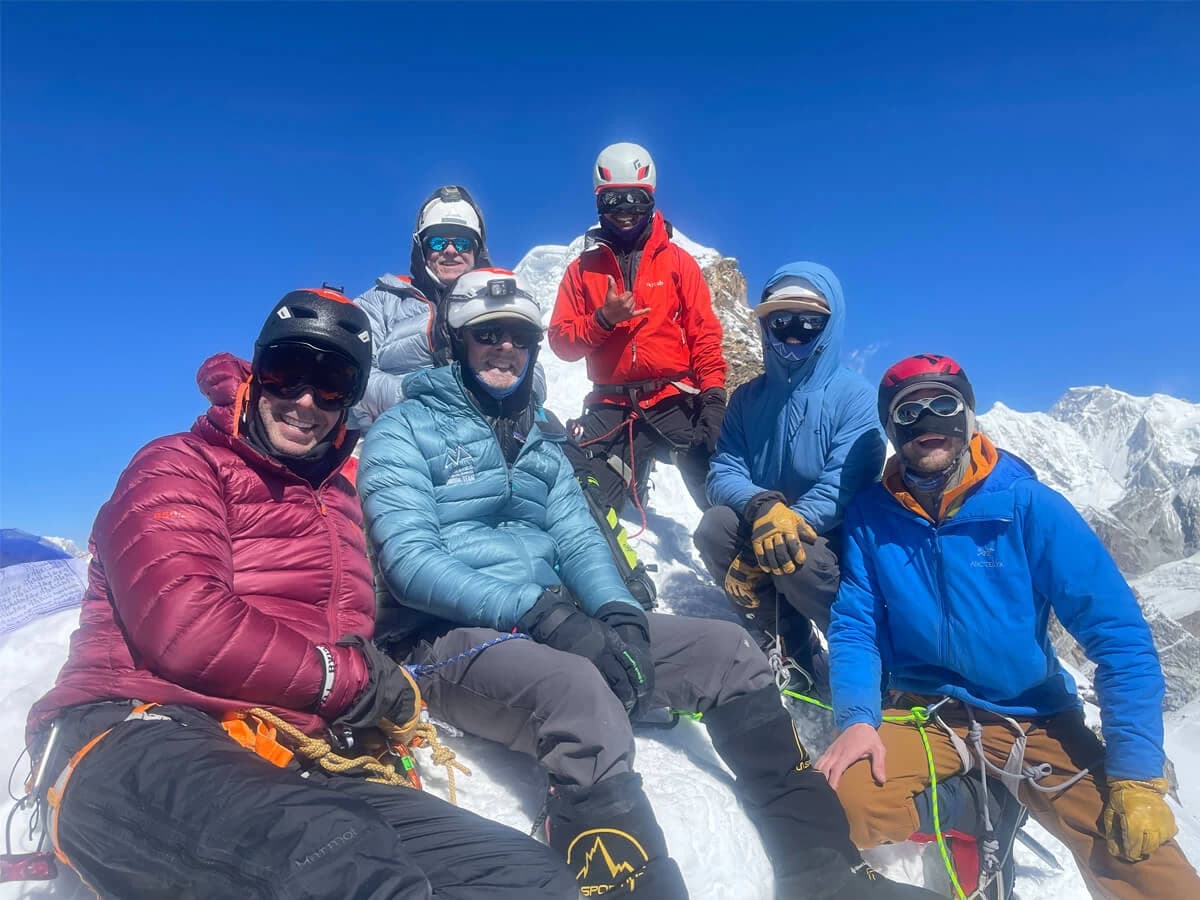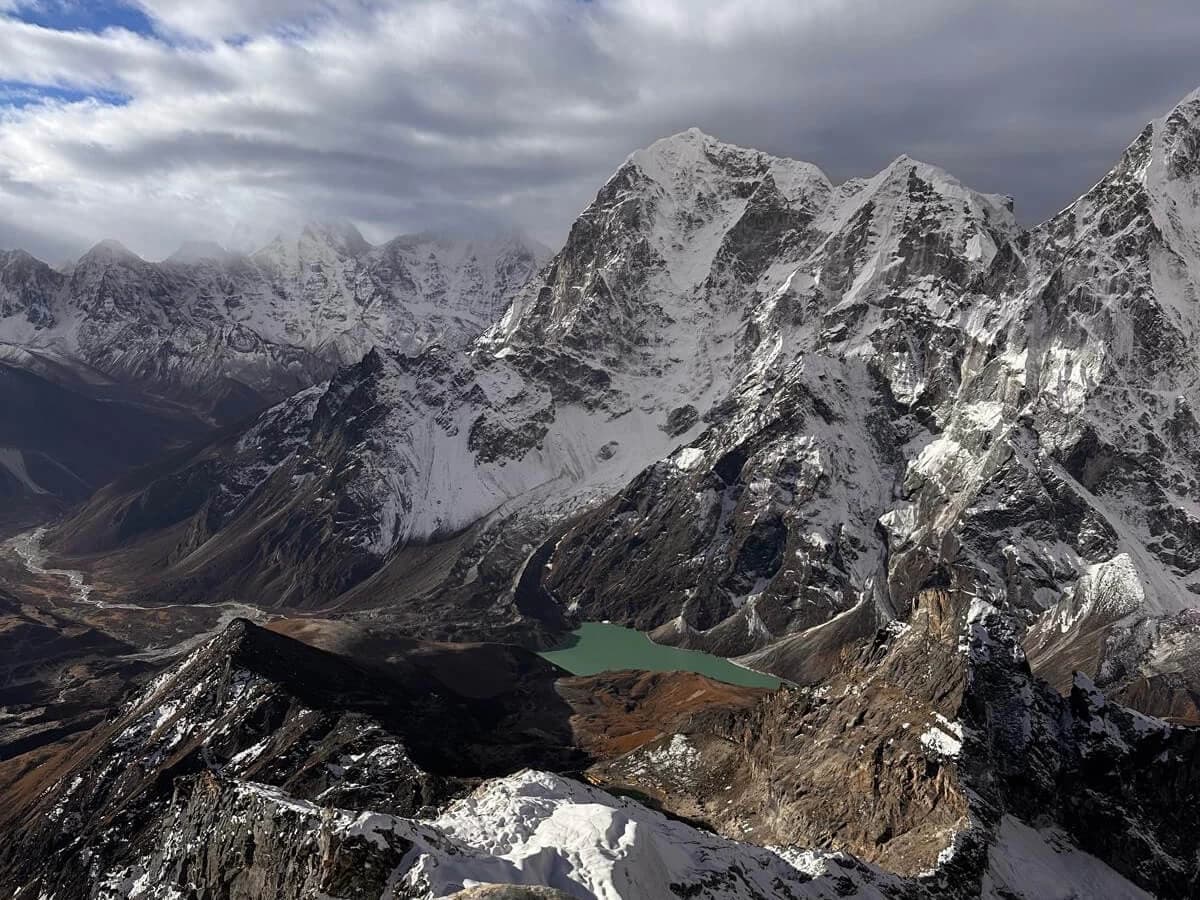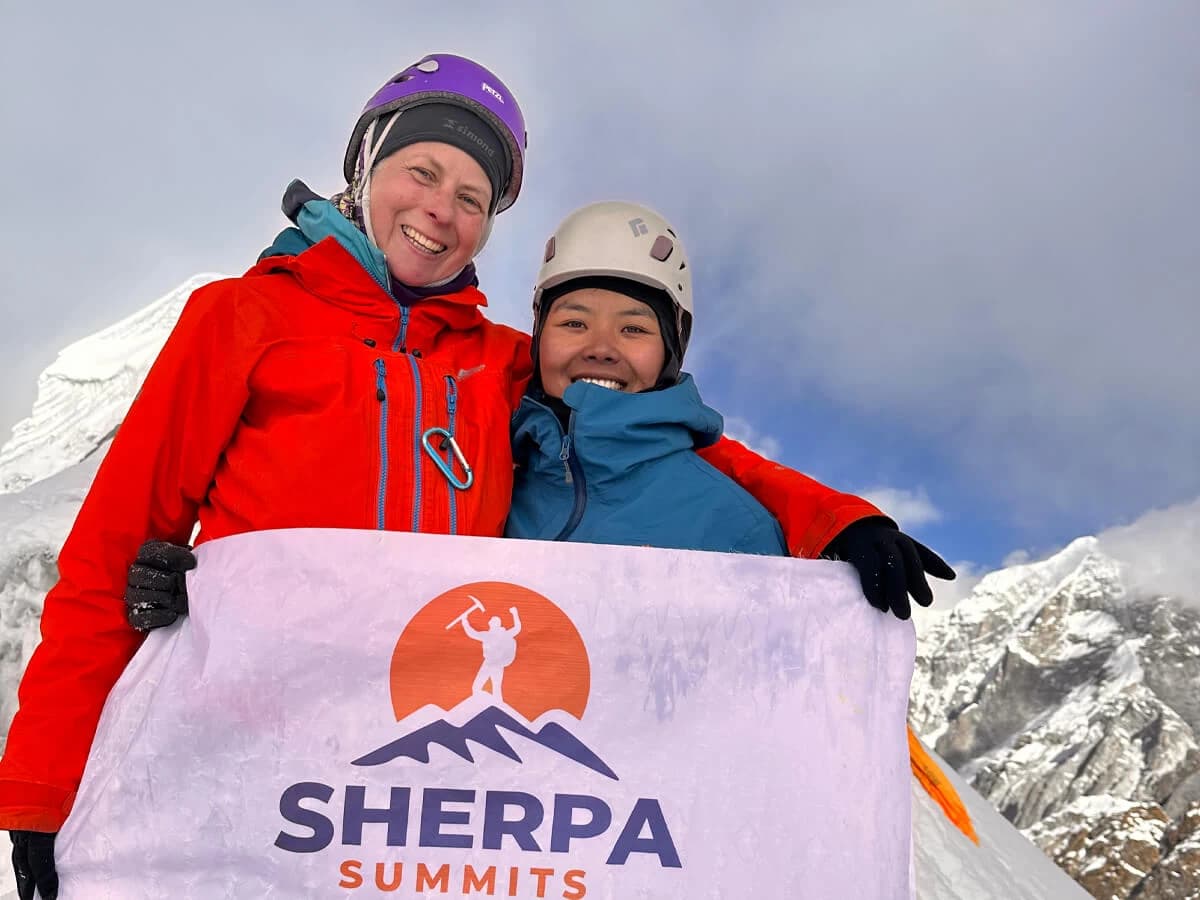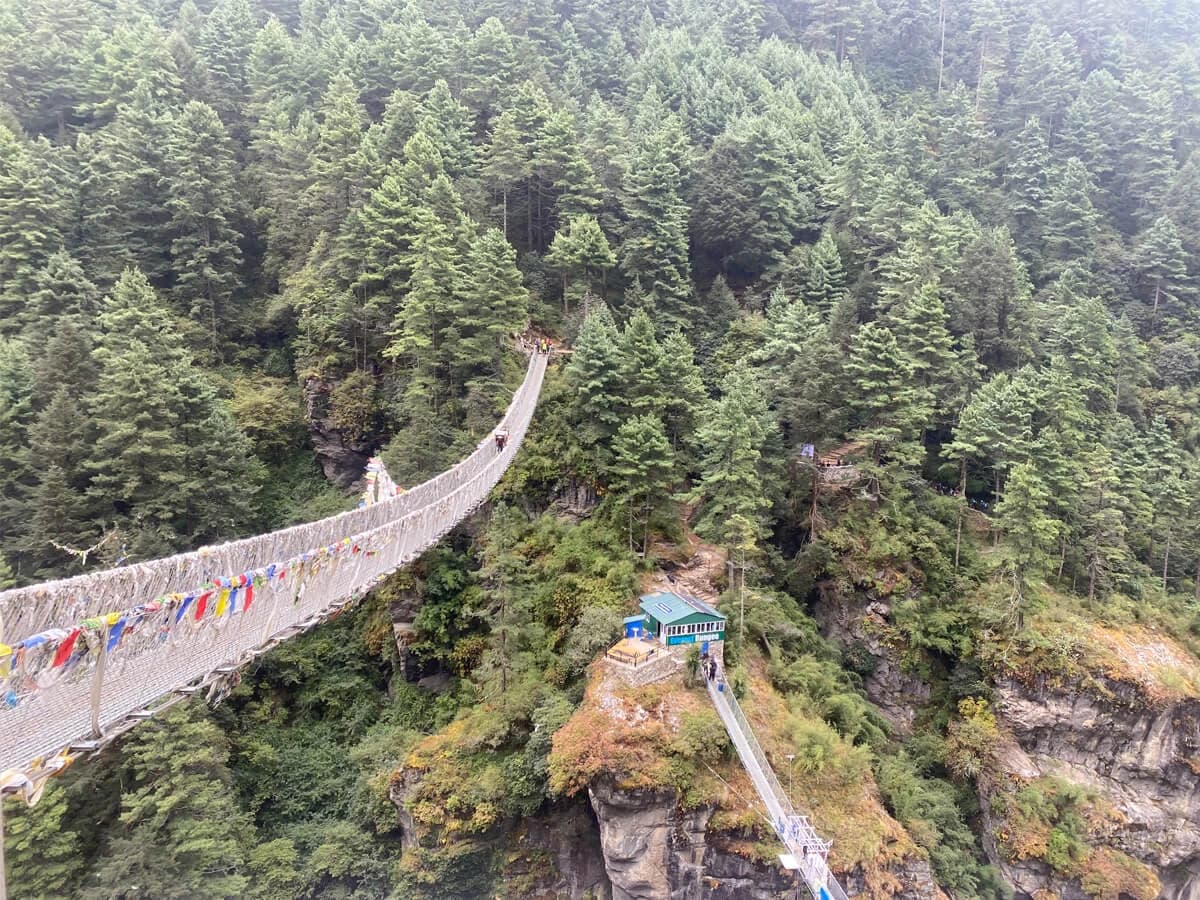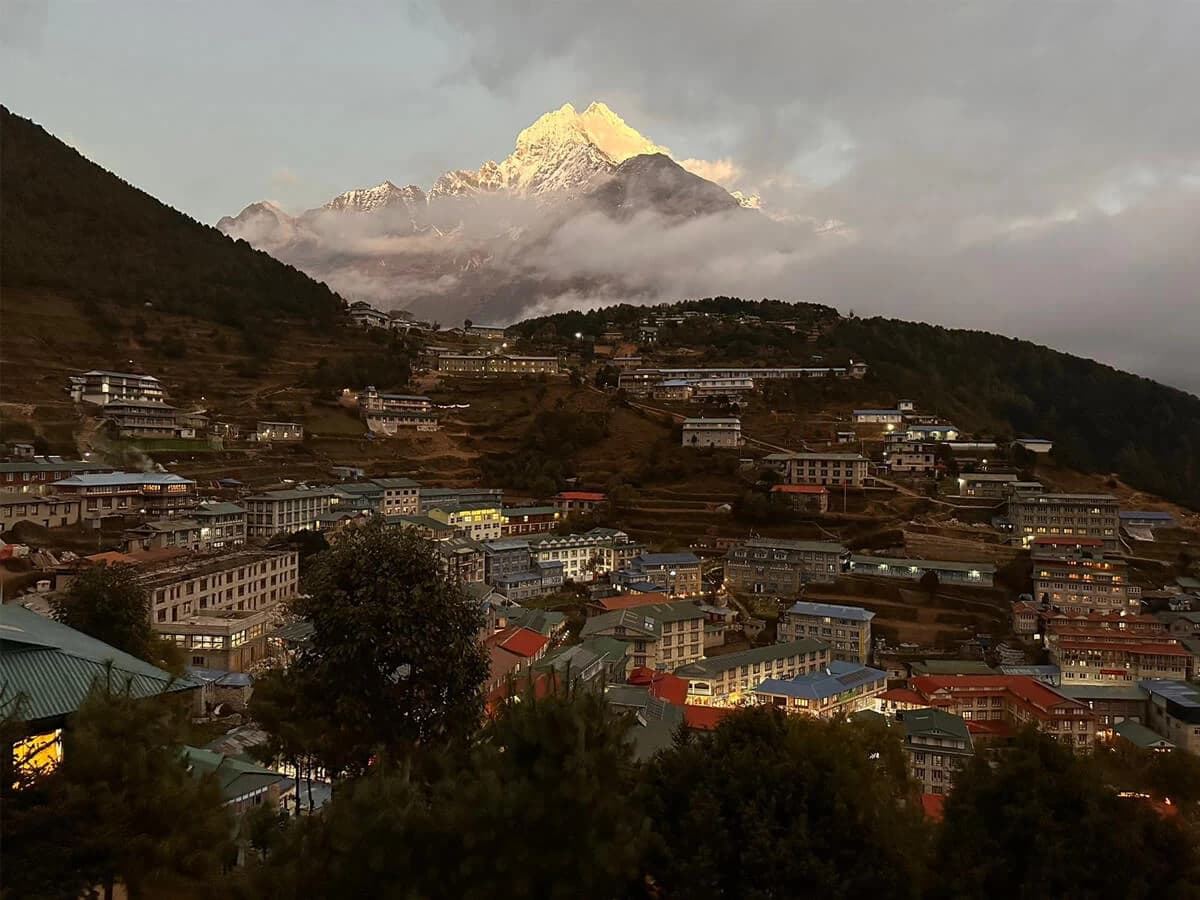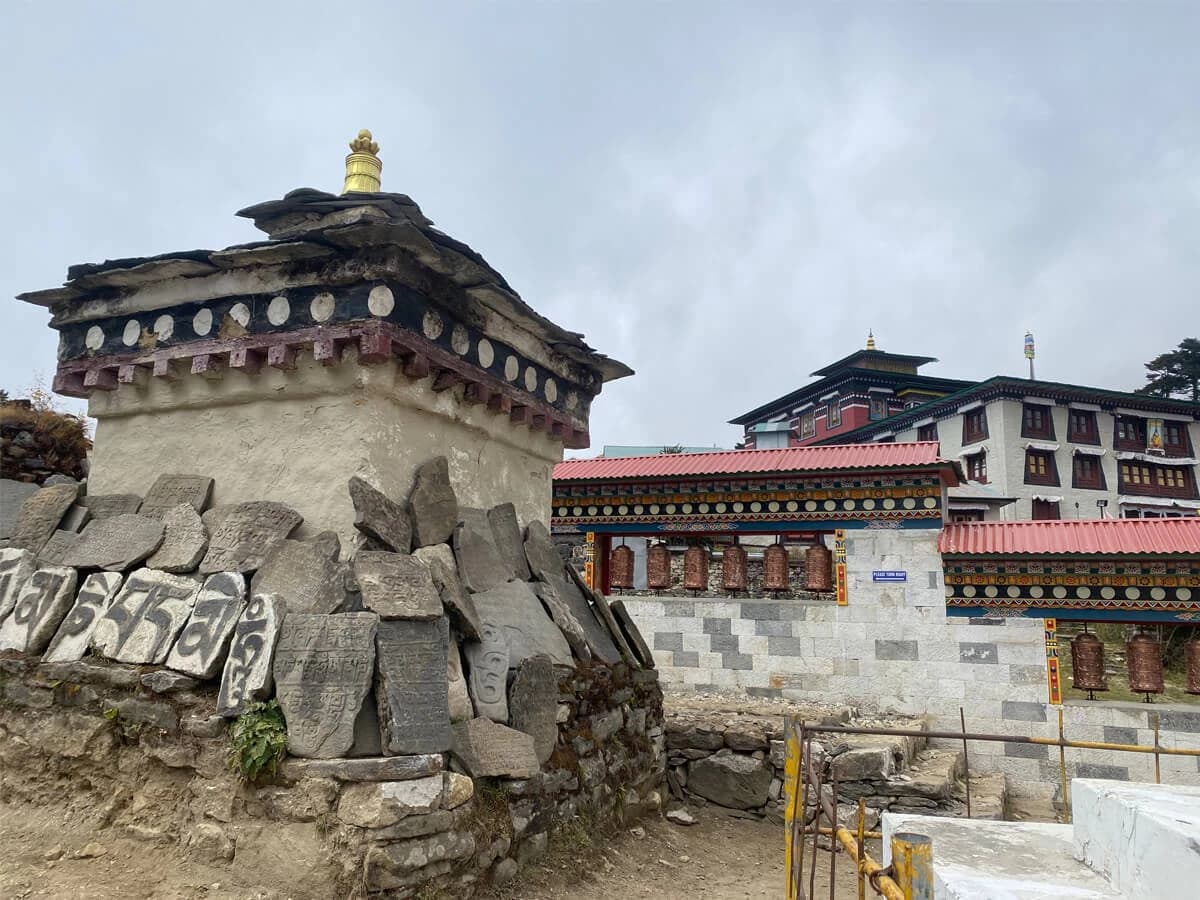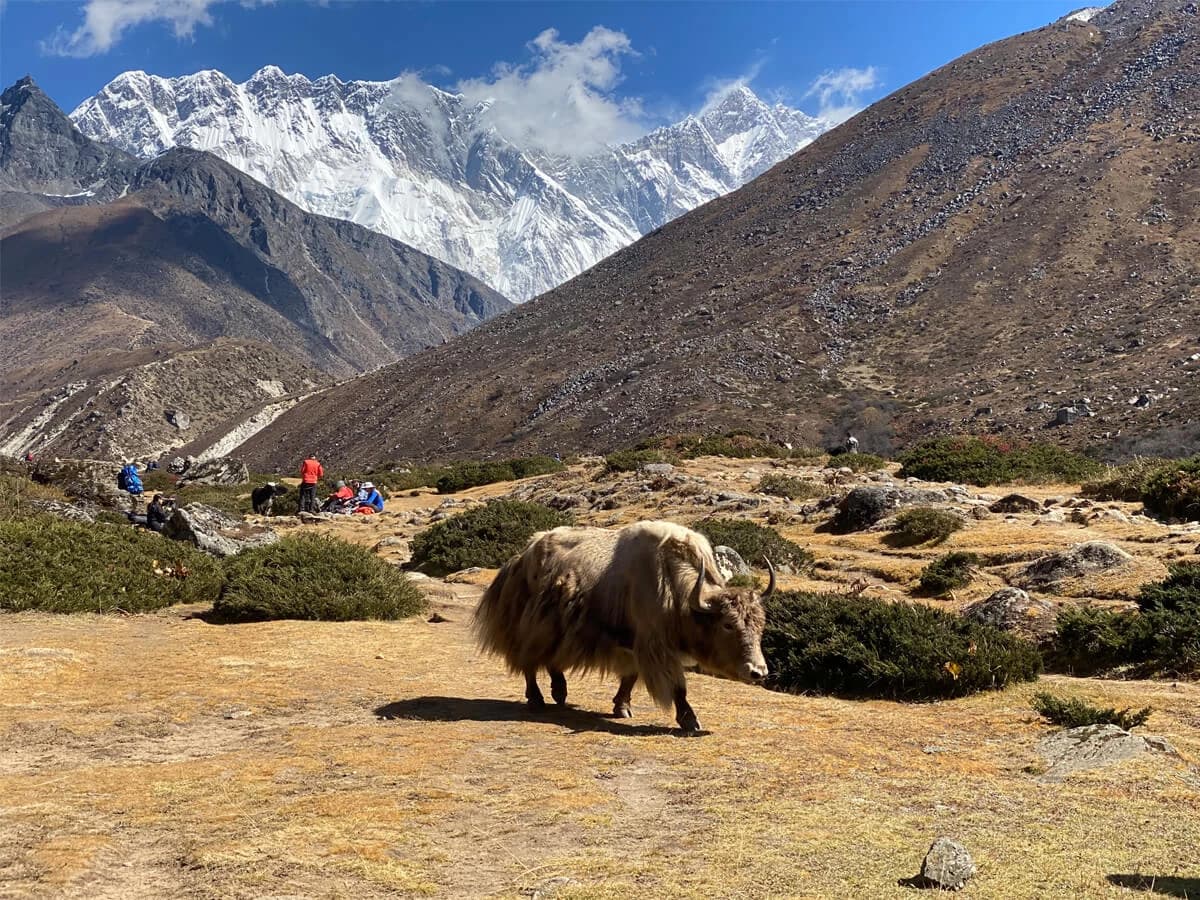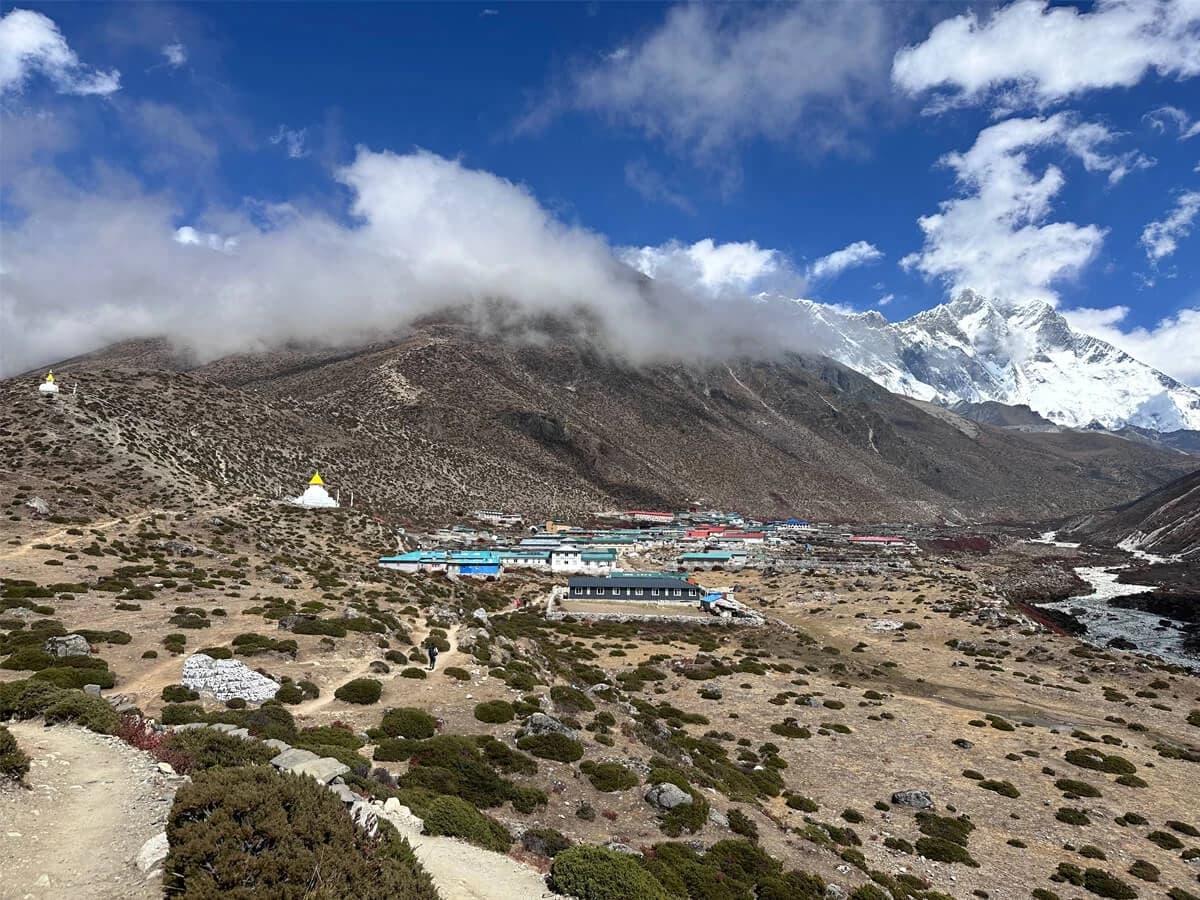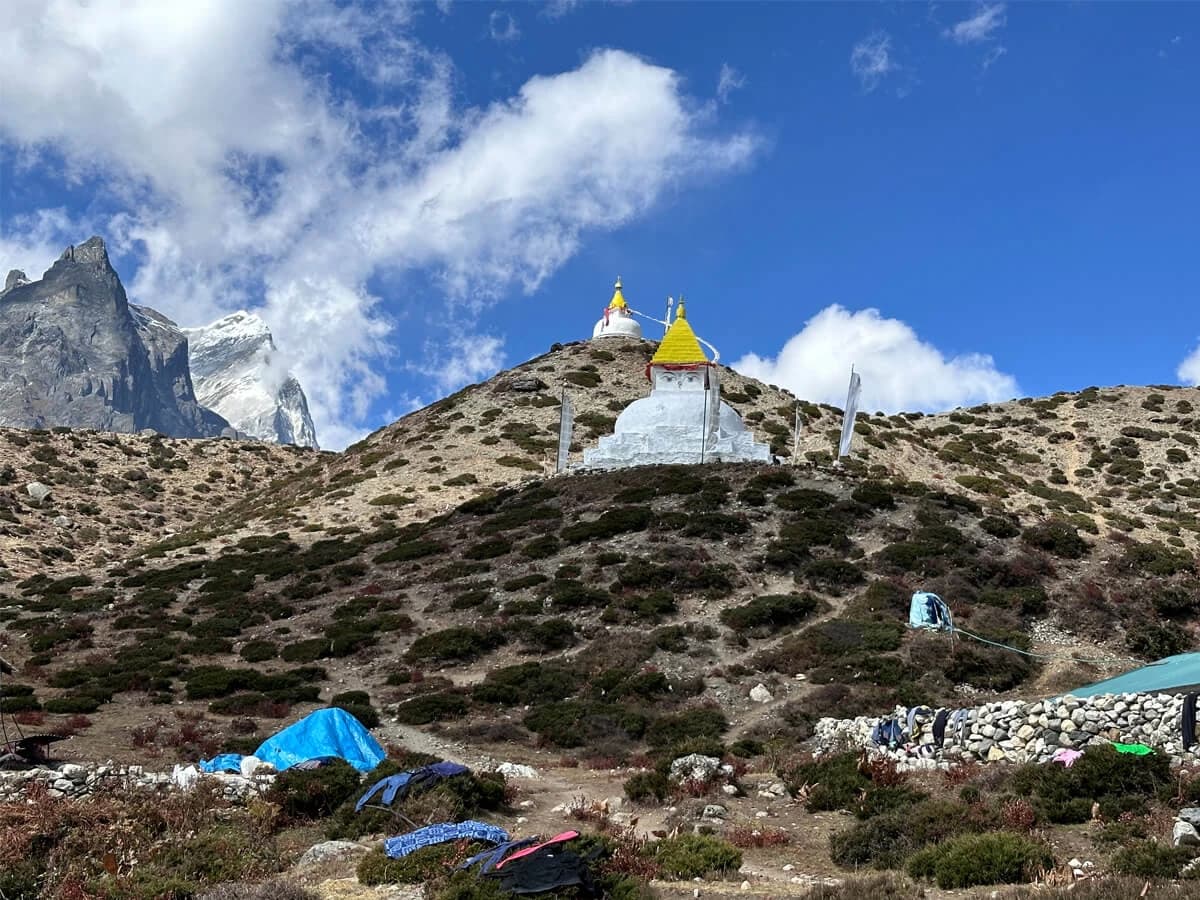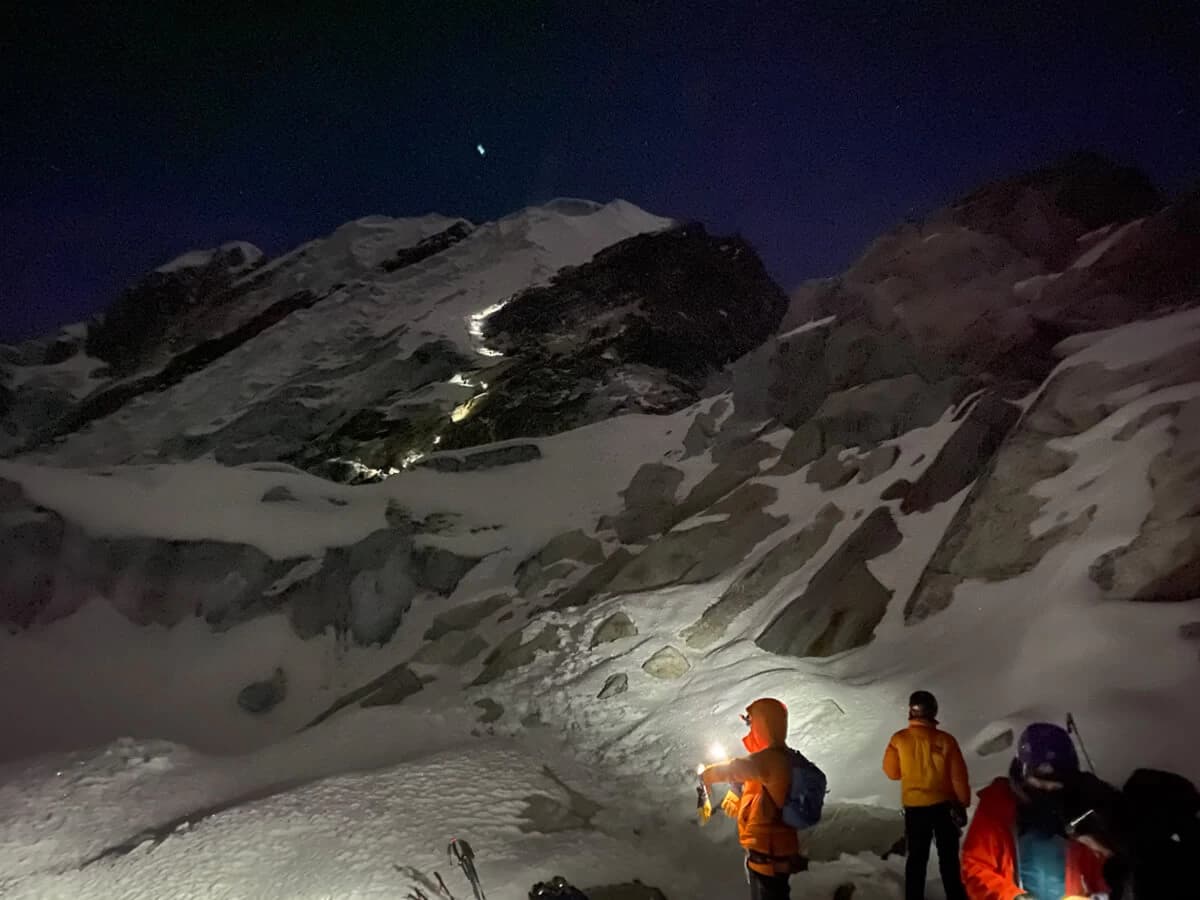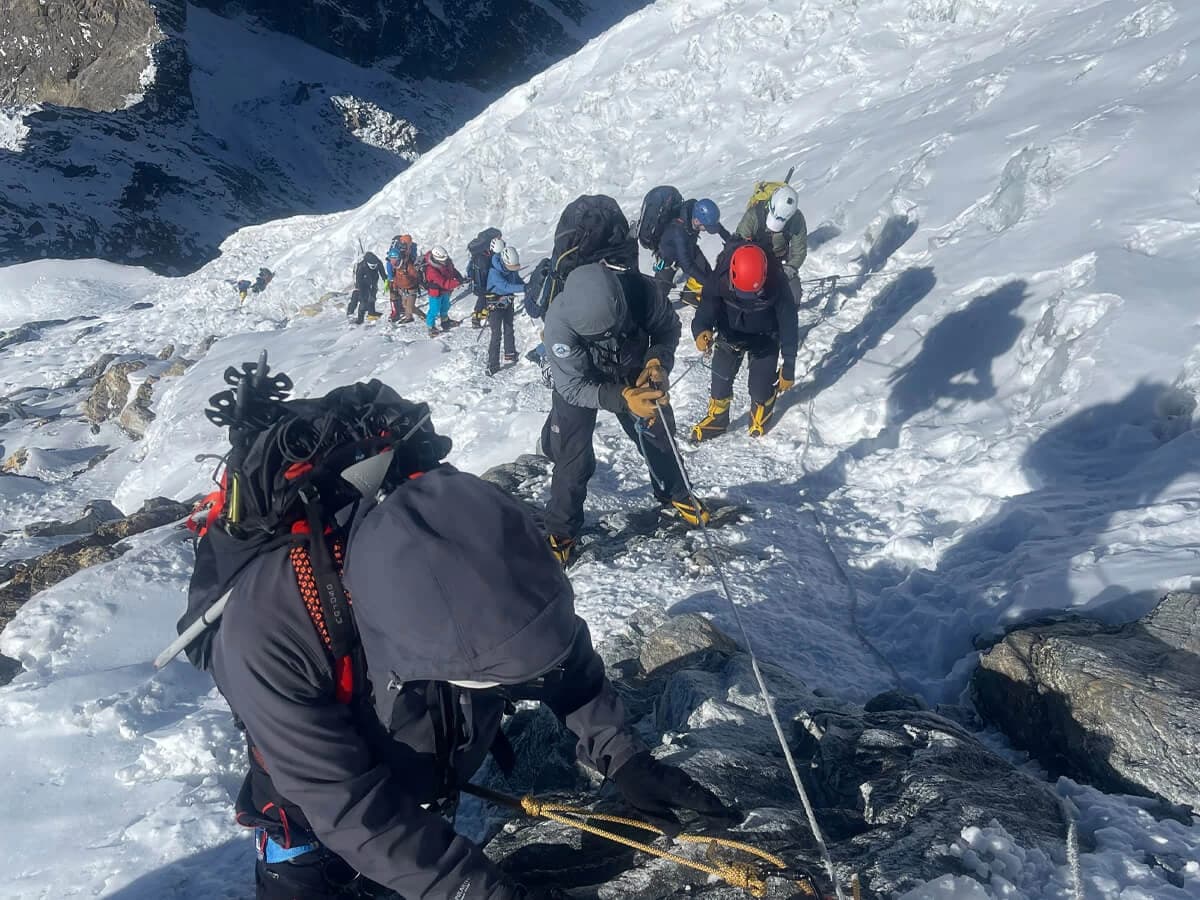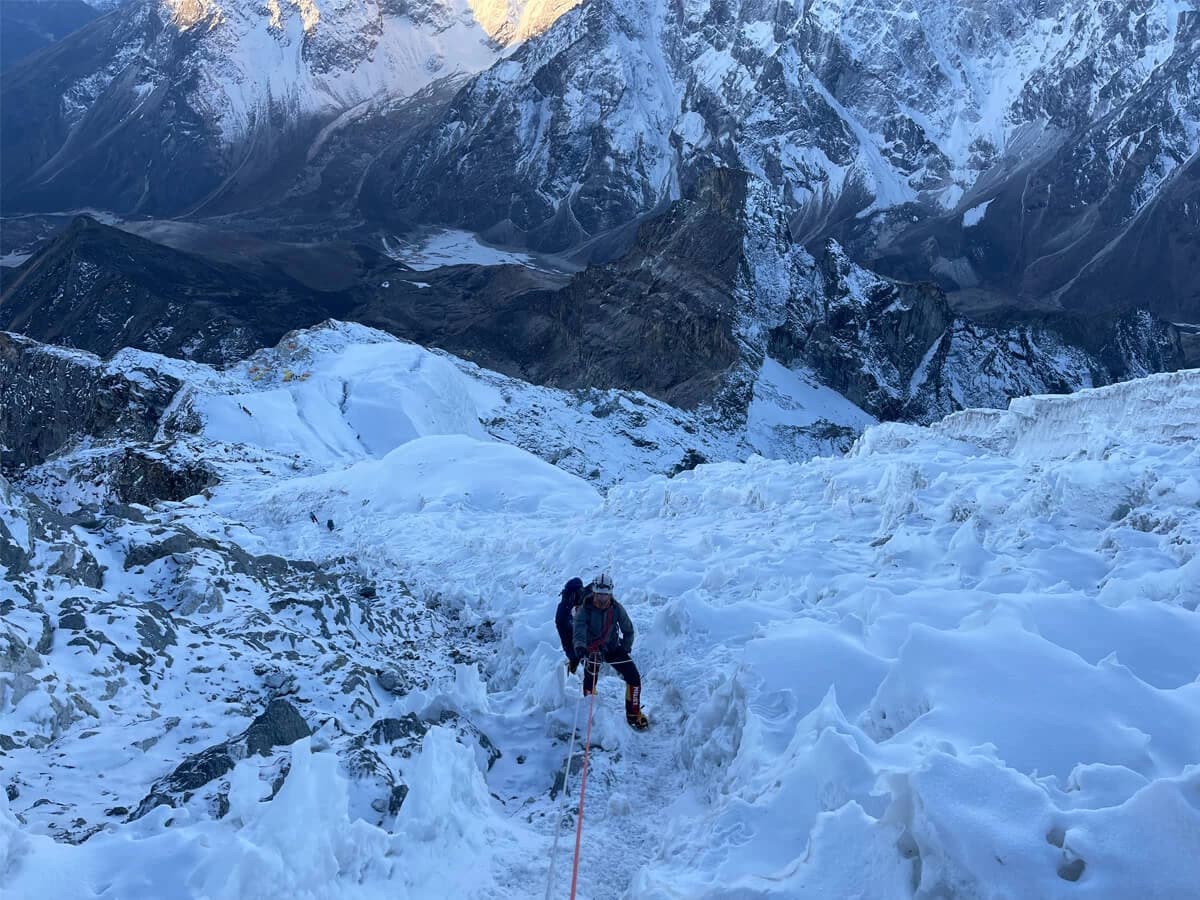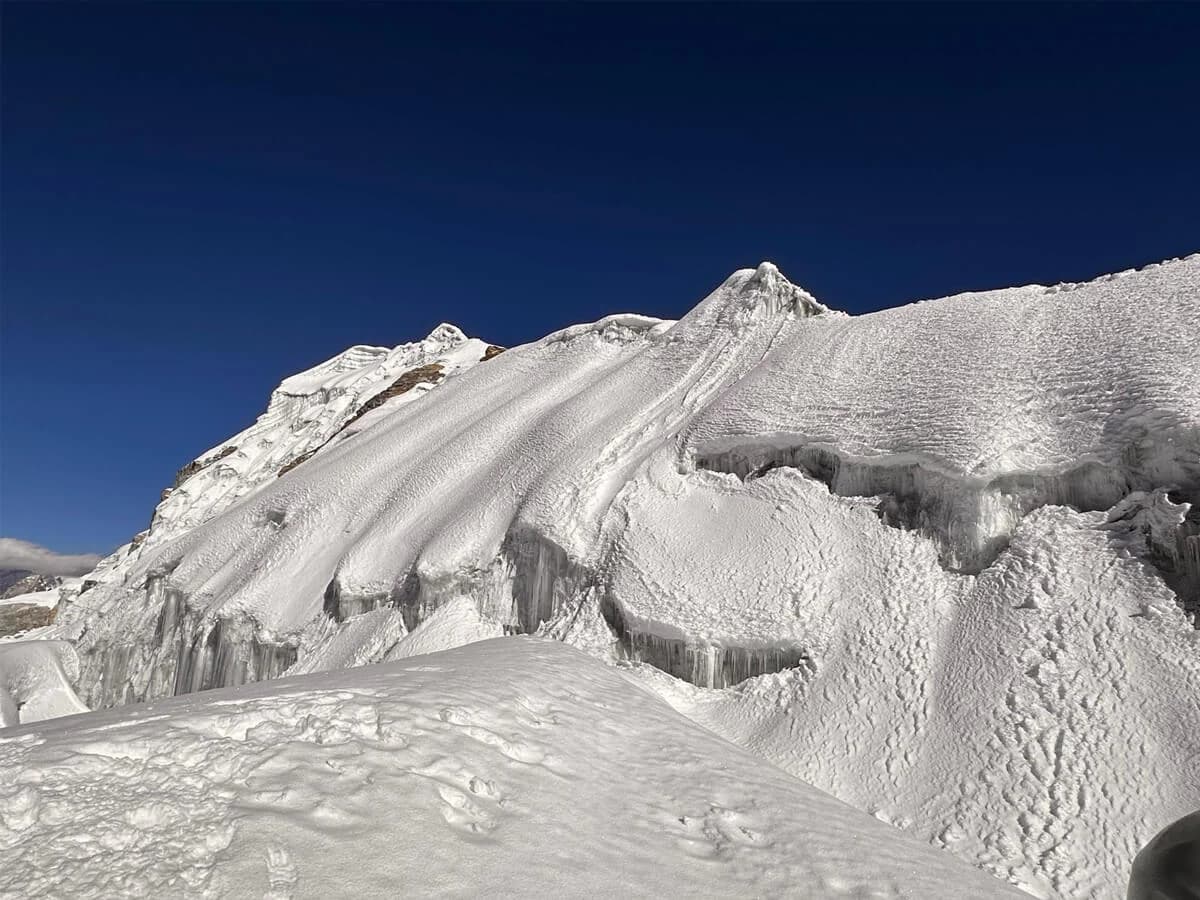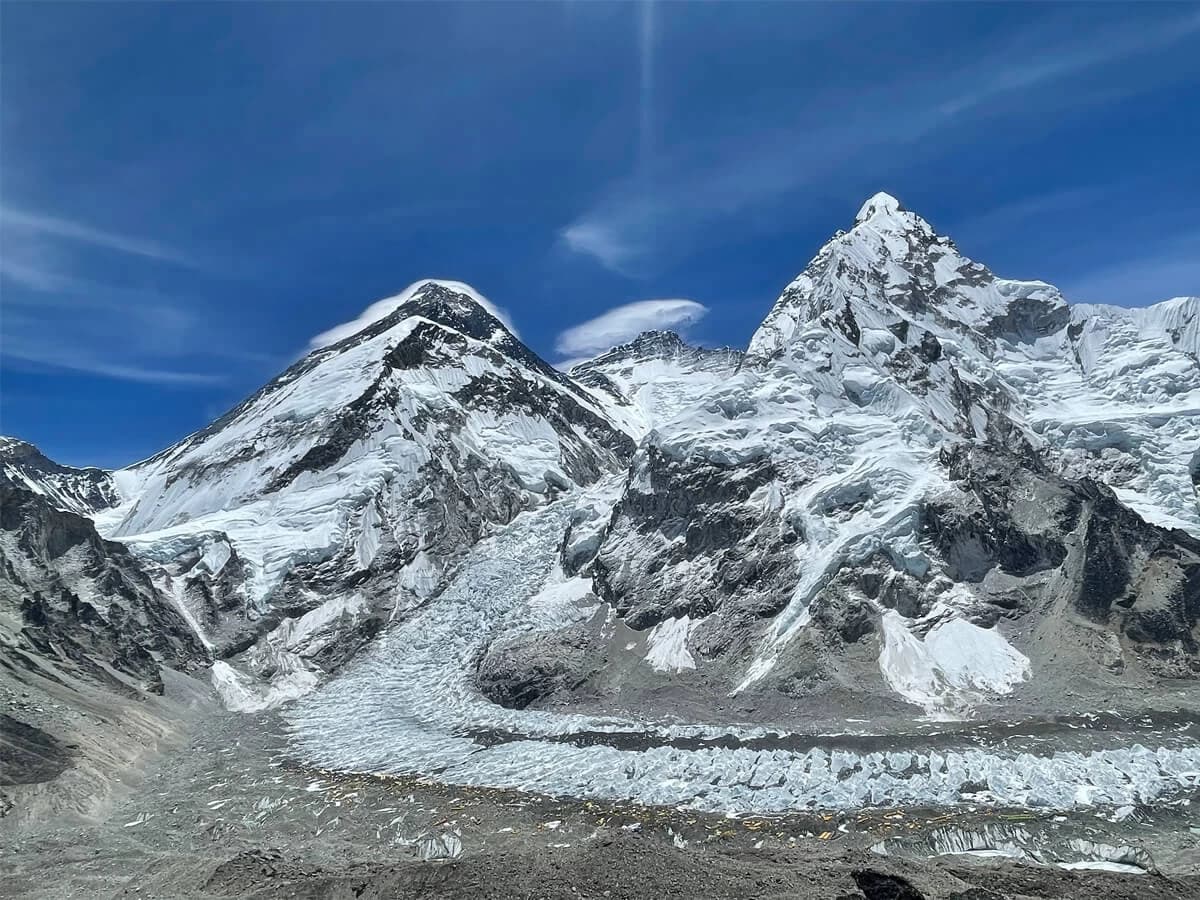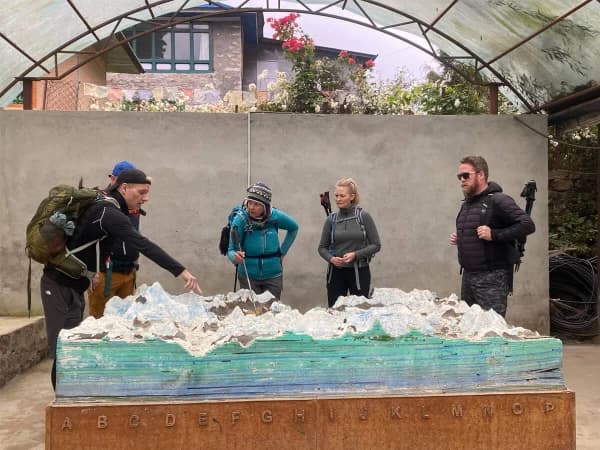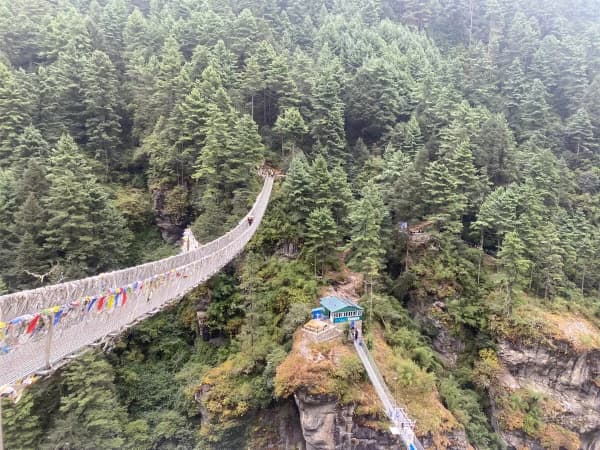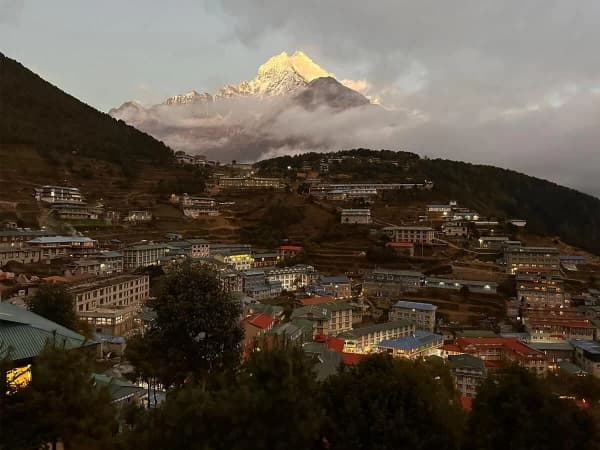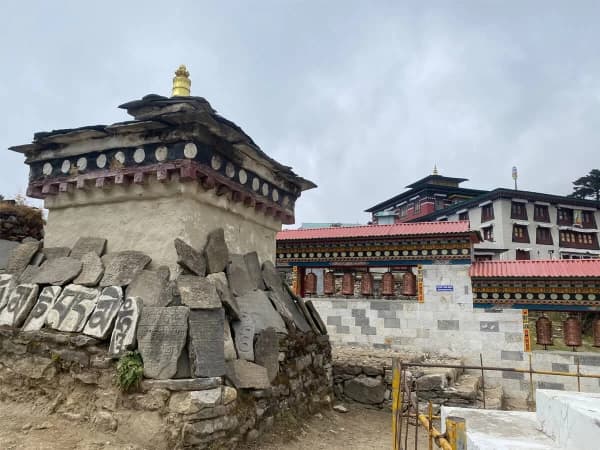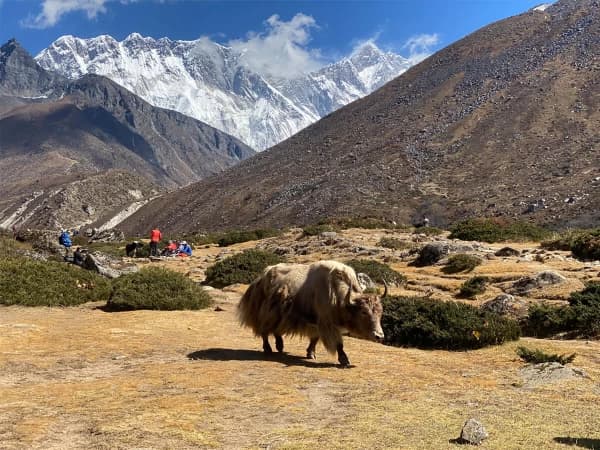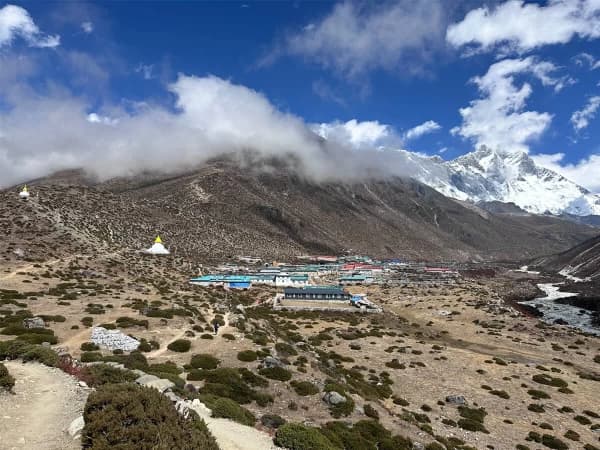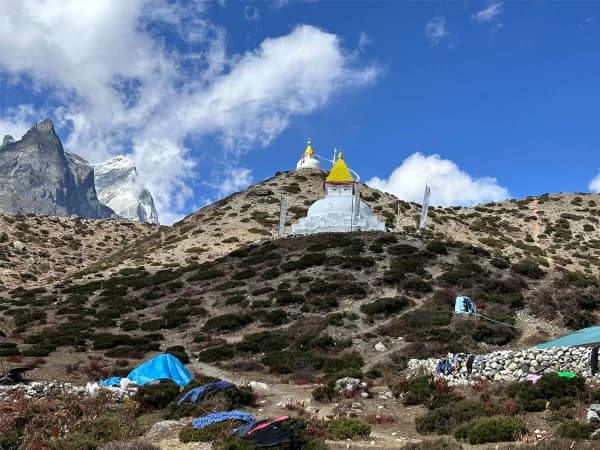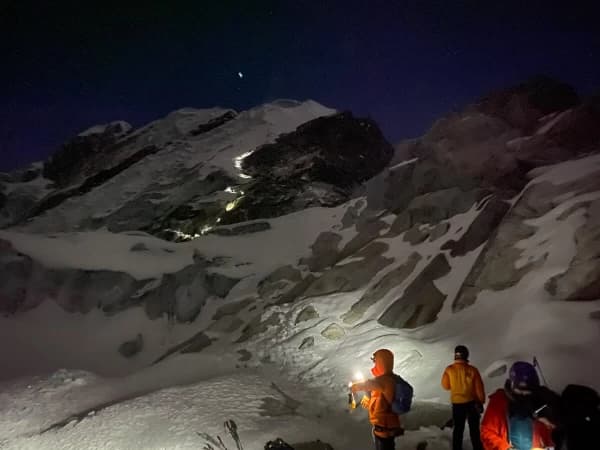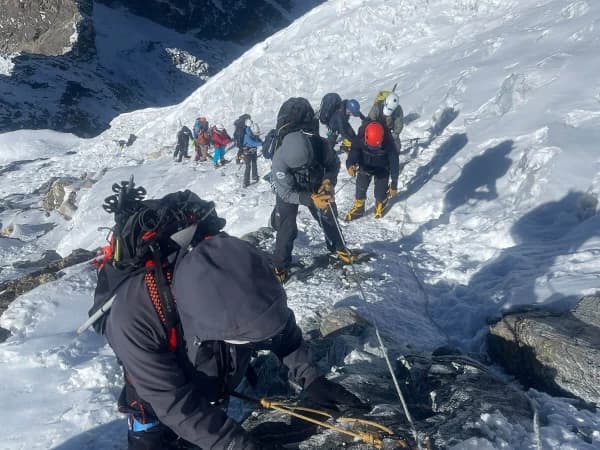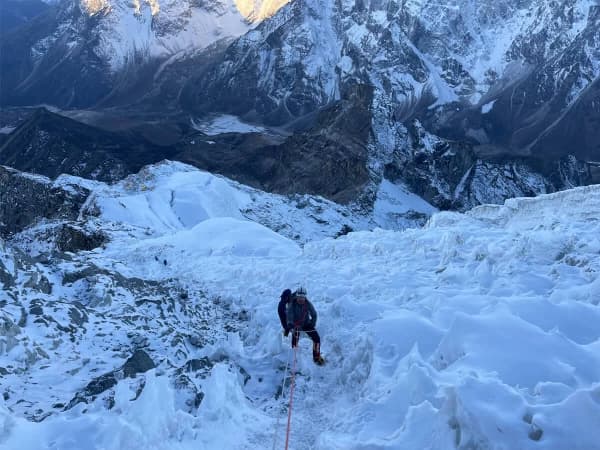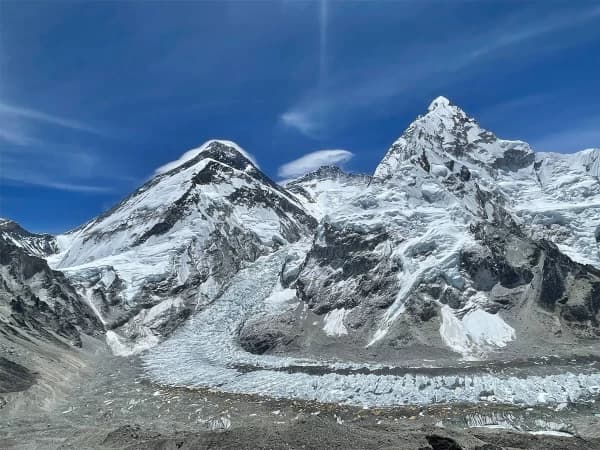Lobuche Peak Climbing with Everest Base Camp (EBC)
Lobuche Peak is one of the 6000-meter peaks and is considered more technically challenging to climb than Island Peak, which has an elevation of 6,119 meters (20,075 feet) above sea level. It is located in the Khumbu or Everest region in the Solukhumbu district of Nepal. Most people used to climb Lobuche Peak to acclimatize to the altitude of the summit of the world’s highest mountain, Mount Everest.
To climb Lobuche peak, there is a required permit for the peak from the Nepal Mountaineering Association (NMA). Lobuche Peak is technical, so here you need training in fixed rope climbing at Lobuche Peak High Camp, which is provided to you by the expert mountaineering guide/climber guide. The route to Lobuche Peak is usually ascended through steep rocky terrains, rock climbing, glaciers, crevasses, and walk-in snow line upwards to the top of the peak.
The trails of Lobuche Peak in the Everest region are perfect, and the paths usually lead you up and down from beautiful Sherpa villages, crossing several suspension bridges, rivers, mountains, waterfalls, oak trees, and pine trees, towards the Sagarmatha National Park, which is the gateway to the Everest region.
Lobuche Peak climbing is the perfect spot for peak climbing, so prepare for the Lobuche Peak climbing as per the climber's suggestions and take outdoor training activities for your peak climbing. Prepare well physically, mentally, and emotionally to get ready for Lobuche Peak climbing. From Lobuche Peak, you can see the breathtaking views of Mt. Everest (8848.86 m), Mt. Pumori (7,161 m), Mt. Ama Dablam (6,812 m), Mt. Cholatse (6,440 m), Mt. Mera Peak (6,664 m), Mt. Lhotse (8,516 m), Mt. Nuptse (7,861 m), and several other peaks.
Highlights
- Get the incredible experience of the Lobuche East Peak (6,119 m/20,075 ft) summit.
- Lobuche Peak offers majestic views of Mt. Everest at 8848.86m, Mt. Pumori at 7,161m, Mt. Ama Dablam at 6,812m, Mt. Cholatse at 6,440m, Mt. Mera Peak at 6,664m, Mt. Lhotse at 8,516m, Mt. Nuptse at 7,861m, and several other peaks.
- Spend your one night in Lobuche High Camp.
- Get implausible panorama views of the world’s highest mountain, Mt. Everest m/29,031 ft).
- Pass through Hillary Bridge to reach Namche Bazar, the gateway of the Everest region.
- Witness the awe-inspiring Khumbu Glacier, the largest glacier in Nepal.
- Experience the unique Sherpa culture and lifestyles and visit charming Sherpa villages like Namche Bazaar and Tengboche Old Monastery.
- Everest Base Camp, the highest base camp in Nepal, lies at an altitude of 5,364 m/17,598 ft.
- Hike to Kalapatthar, a viewpoint at 5,545 meters, for spectacular sunrise views of Mt. Everest and surroundings.
- Trek through the Sagarmatha National Park of the Everest region.
- Sightseeing in the Sherpa Museum, Tenzing Norgay Memorial Park, and Sagarmatha Next at bustling Namche Bazar.
- Trek through the Gorakshep for the Everest base camp trek. Gorakshep used to be the main base camp of Mt. Everest till the late 50s in the 19th century.
Why do the Lobuche Peak Climbing with Everest Base Camp 17 Days Trek?
We Sherpa Summits have designed this 17-day Lobuche peak climbing experience with an Everest base camp trek for both your trekking and peak climbing experience at the same time. The Everest base camp, or Everest region, is everyone's dream destination, so to fulfill your dream, we are here and available to give you good-quality services at an affordable cost. This trek will offer you breathtaking views of the world’s highest Mt. Everest, including Mt. Ama Dablam, Mt. Pumori, Mt. Kwangde Ri, Mt. Mera Peak, Mt. Island Peak, Mt. Lobuche Peak, Mt. Lhoste, Mt. Cholatse, Mt. Thamserku, Mt. Lhotse Shar, Mt. Tabuche, and several other peaks.
This 17-day trekking and peak climbing will lead you to drive from Kathmandu to Ramechhap Manthali, taking 5 to 6 hours by Jeep for the Lukla flight. Especially in March, April, May, October, and November, the airline could not directly fly from Kathmandu’s Tribhuvan International Airport to Lukla Airport due to the busy tourist season in Nepal, so most of the Lukla flights operate from Ramechhap instead of Kathmandu Airport, and it takes 20 minutes to fly from Lukla to Manthali. Although Lukla to Kathmandu flights only operate in January, February, June, July, August, September, and December, this time they are not that busy, and it takes 35 minutes to direct flights from Lukla to Kathmandu.
The Everest base camp trek provides authentic Sherpa cultures and their Himalayan lifestyles, traditions, festivals, foods, ancient heritages, and the hidden story of the several places. You can enjoy seeing the countless Mani walls, prayer flags, pagodas, stupas, and monasteries along the trails and in the villages. Will visit the scary Tengboche Monastery; the monastery is the oldest and highest in Nepal. Especially the Everest region hosts the famous Mani Rimdu festival, where lamas perform the scary mask dances. It is a 19-day festival celebrated by Buddhists in the Everest region of Nepal to mark the founding of Buddhism by Guru Rinpoche (Padmasambhava). It is celebrated as per the Tibetan lunar calendar, which falls between October and November in the English calendar. While you are trekking in the given months, do not miss this amazing festival.
Lukla is the gateway of the Everest region. Explore it and enjoy the panoramic vistas of surrounding areas and the mountains. Discover Namche Bazar, the trading center of the Everest region and the town of the Khumbu Pasang Lhamu Rural Municipality. Where you can find numerous accommodation facilities and several shops to purchase trekking gear and local handicrafts goods gift shops, as well as experience cultural immersion. While trekking, you can see the major mountains on the trail: Mount Kusum, Kangaru, Kwangde Ri, Thamserku, Amadablam, Cholatse, Lobuche, Pumori, Cho Oyu, Nuptse, Lhotse, and Mount Everest, etc. So, the sight of the mountains is abundant during the trek.
At last, the trek usually goes through the pine forests, rhododendron forests, and alpine meadows, crossing the Dhudkoshi River, Bhotekoshi River, Imja River, and several waterfall valleys up, down, and straight toward the Everest base camp trek and Lobuche Peak climbing. Along the way, you can see the wilderness animals such as Himalayan Thar, blue sheep, and yaks, as well as a variety of flora and fauna of high-altitude regions. This trekking and Lobuche Peak climbing offers close snow-capped captivating views of the world’s highest mountain, Mt. Everest (8,848.86 m/29,031 ft), containing Cho Oyu (8,201 m/26,906 ft), Mt. Cholatse (6,440/21,126ft), Lhotse (8,516 m/27,940 ft), Aamdablam (6,812 m/22,349 ft), Lobuche (6,119 m/20,075 ft), Pumori (7,161 m/27,494 ft), Nuptse (7,861 m/ With elevations of 4,900 m (16,100 ft) at its terminus to 7,600 m (24,900 ft) at its source, it is the world's highest glacier, moraines, Khumbu Icefalls (5,486 m/17,999 ft), and several other named peaks.
Are you ready for the Lobuche Peak Climbing with Everest Base Camp Trek? How to Prepare for the Journey?
The trek to the Everest Base Camp and Lobuche Peak climbing is a challenging but incredibly rewarding adventure. To ensure you are well-prepared for the trip and keep your body healthy and fit. If you are a regular climber, trekker, and hiker, it can also encourage you to trek successfully without causing any harm related to high altitude sickness. Manage your gear and equipment for your Lobuche Peak climbing with Everest Base Camp trek. Purchase good-quality warm climbing and trekking equipment for yourself that can be used for a long time, so invest money only for quality products to protect your body from the cold and harsh weather conditions in the high elevation.
Physical Fitness
- Cardiovascular Endurance: Build your stamina with activities like hiking, running, swimming, or cycling. Aim for at least 30 minutes of moderate-intensity exercise most days of the week.
- Strength Training: Focus on lower body exercises (squats, lunges, calf raises) to strengthen your legs, which will be crucial for the trek and peak climbing.
- Flexibility: Incorporate stretching exercises into your routine to improve your range of motion and prevent injuries.
Acclimatization
- To acclimatize your body, spend a few days at lower altitudes before attempting the climb. This will help your body adapt to the thinner air.
- Gradual Ascent: Plan your climbing with acclimatization days to allow your body to adjust to the high altitude.
- Listen to Your Body: Pay attention to symptoms like headache, nausea, or fatigue. If you experience any of these, rest and consult a medical professional.
Mental Preparation
- Positive Mindset: Cultivate a positive attitude and a strong mental outlook. The trek and peak climbing are physically demanding, so having a positive mindset will help you overcome challenges.
- Research and Planning: Learn about the trekking and peak climbing, its route, and the weather conditions. This knowledge will help you feel more prepared and confident.
- Hire a guide: A qualified guide will help you navigate the terrain, assess the weather conditions, and provide safety tips.
Lobuche Peak Climbing with Everest Base Camp Trek Packing Lists
- Headwear: Woolen hats, head buff, neck gaiters, fleece cap, balaclava, buff masks, hand warmers, caps, 100% UV-protected sunglasses, UV-protected sunglasses, glacier glasses (UV protected)
- Hand wears: Glove thick 3 pair, summit gloves, glove warm pair gore-tax 3 to 4 pairs
- Upper Body wears: Thermal layers and fleece, quick-dry T-shirt, Gore-Tex jacket, warm thick down jacket, soft shell jacket, and summit jackets
- Lower body wear: Trekking pants, thermal trousers, Gore-Tex pants, trekking socks, summit socks, comfortable trekking boots, alpine or summit boots, down pants, slippers
- Climbing gear and equipment: helmet, harness, belly device/ATC guide, lock/unlock carabiners, crampons, jumars, prusik loops, auxiliary ropes, tip sling ropes, dynamic ropes, ice axe, alpine boots, sleeping bags, and down warm mattress.
- Miscellaneous: Headlamp, batteries, reusable water bottles, water purification tablets, thermos, trekking pole, raincoats, map, compass, trekking bag, backpack, personal first aid kit, adapter, charger, power bank, dry fruits, nuts and chocolates, sun protection camera, etc.
- Travel Documents: Valid passport, PP size photos 2 or 4, insurance papers, contact address.
- Toiletries: toilet paper, deodorant, shampoo, soap, wet tissue, toothbrush/toothpaste, hand sanitizers, sun lotion, moisturizer, sunscreen, lip balm, garbage bags, quick-dry towel, umbrella, etc.
Get the Best Lobuche Peak Climbing with Everest Base Camp Trek Service with Sherpa Summits
We, Sherpa Summits, specialize in crafting unforgettable trekking and peak climbing experiences for both domestic and international adventures in Nepal. Our dedicated team is committed to providing exceptional support throughout your trekking and peak climbing trips. From acquiring essential permits and arranging transportation to handling every logistical detail, we ensure a seamless experience tailored to your preferences.
Enjoy the epitome of quality service at an affordable price with our Lobuche Peak Climbing with Everest Base Camp Trek Packages. Whether you’re embarking on a solo adventure peak climbing or exploring the Himalayas with family, friends, or a partner, your safety and satisfaction are our top priorities. Our expert guides, assistant guides, and trustworthy porters are fluent in English and other languages, guaranteeing effective communication and cultural exchange.
Customize your Lobuche Peak Climbing with Everest Base Camp Trek to align perfectly with your desires. Select your preferred departure date, group size, and daily itinerary. We welcome trekkers of all ages, as long as you possess the necessary physical and mental fitness. Rest assured, there are no hidden costs involved, and you will receive transparent pricing for your trek.
Embark on the adventure of a lifetime with Sherpa Summits. Our Everest Region Trekking and Peak Climbing bookings for 2025 and 2026 are now open. Don’t hesitate to contact us for any inquiries or to start planning your dream Himalayan expedition.
